Buddhism, as a global religion.
Buddhism as a global religion has always had a special appeal to the global citizens. The Buddhist religion as well as Buddhist socio-cultural practices has been highly appreciated and accepted with humility across the borders of India historically. Buddhism evolved and was established in India from the time of Gautama Buddha and then following the Islamic rule in the medieval period slowly lost its essence in the country. But the global dissemination of Buddhism as well as the spread of Buddhist philosophies, ideas, teachings and principles is credited to the Maurya Emperor Ashoka 500 years after the Samyamuni Buddha’s Nirvana. Through his generosity and tireless efforts, Buddhism is now established as a global religion in India, Nepal, Bhutan, Tibet, China, Mongolia, Japan, South Korea, Bangladesh, Myanmar, Thailand, Vietnam, Cambodia, Laos, Singapore and Sri Lanka. Buddhism is now recognized as the fourth/fifth largest religion on the planet.
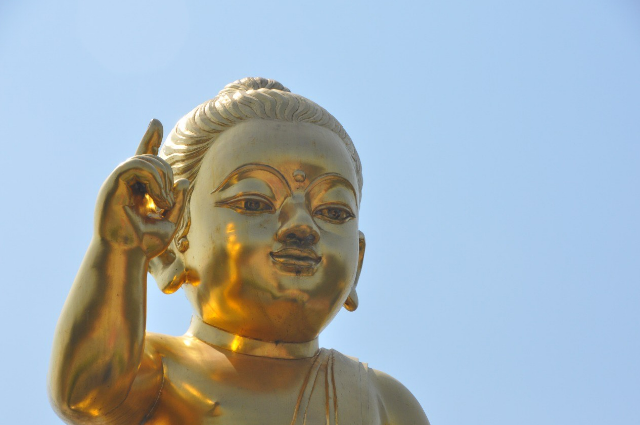
Mayadevi Temple and Park Complex, Lumbini Nepal. Photo credit: Saikat Kumar Basu
Ashoka’s monumental efforts helped in the spread of Buddhism in parts of Pakistan, Afghanistan and Central Asia along the Silk Route that connected the Asian heartland to the continent of Europe across Eurasia. Modern-day excavations conducted across India, Nepal, Bangladesh, Pakistan, Afghanistan and Central Asian countries (Tajikistan, Uzbekistan, Turkmenistan, Kyrgyzstan and Kazakhstan), Mongolia and China and in even parts of Russia have demonstrated sites and relics related to early Buddhism and remnants of Buddhist socio-cultural practices. Several new archeological sites in remote areas of these localities have led to the discovery of remnants of Gandhara Art, Ashokan rock edicts and pillars, relics of ancient Buddhist stupas, sanghas and temples, ancient architecture abs artworks, ornaments, texts and tablets in connection to the spread of Buddhism during the ancient period of our global history abs heritage. Today we have Buddhism as a well-respected and predominant global religion across South and South East Asia. Even in the Islamic nations of the Middle East, Indonesia and Malaysia are also open to Buddhism as a religion in these countries and has even allowed the construction of temples, stupas, gardens and Buddhist memoirs and museums in such highly conservative nations.

The statue of Emperor Ashoka at Metta Thai monastery: Bodhgaya, Bihar India. Photo credit: Saikat Kumar Basu
New global trends
A new trend of modern Buddhism has been demonstrated by a significant wave of the dissemination of Buddhist faiths, theology, and ideas across several Western democracies. This new spread of Buddhism has been noticed in the region of Oceania (Australia and New Zealand), North America (USA and Canada), Europe (Russia, UK, Ireland, Iceland, France, Belgium, Germany, Spain, Portugal, Greece, Italy, Austria, Switzerland, Malta, San Marino, Lichtenstein, Luxembourg, Monaco, Andorra, Holy See, Norway, Sweden, Finland, Denmark, Netherlands, Slovakia, Slovenia, Montenegro, North Macedonia, Albania, Czech Republic, Croatia, Bulgaria, Romania, Lithuania, Latvia, Estonia, Moldova, Ukraine, Poland and Belarus) are all showing a rapid rise of Buddhism in these countries.\
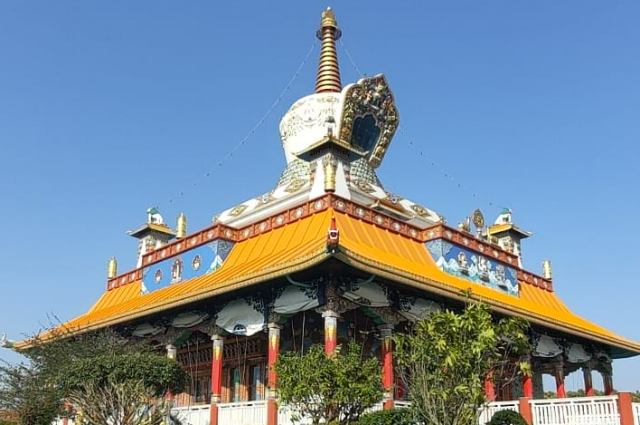
German-Tibetan monastery at Lumbini, Nepal.
Off course the adoption and acceptance of Buddhism are not as fast or high as Islam or Christianity; but none the less, the increasing number of magnificent Buddhist sculptures, temples, stupas, Buddhist theme gardens and parks, bridges, iconic rock gardens, bells, fountains, meditation centres, Buddhist churches and assemblies, Buddhist clubs and associations have been on a steep rise. Buddhist religious, social and cultural clubs are quite common and increasingly popular associations in several Western university campuses across Europe, Canada, USA, Australia and New Zealand. Various aspects of Zen Buddhism, Chinese Buddhism, Sri Lankan, Thai and Tibetan Buddhism circles are quite a common sight in these western countries now.

The ruins at Sarnath Stupa Complex: Sarnath, Uttar Pradesh, India. Photo credit: Saikat Kumar Basu
Why is Buddhism becoming popular in Western societies?
The pertinent question to raise and analyze is why is Buddhism becoming popular in different Western democracies. One important factor has been the immigration and subsequent settlement of people from South, South East and Far East Asian countries and cultures in several western democracies. Many of them are now second or third-generation immigrants with strong cultural ties with their mother nations. They have not only bought expertise, labour force, innovations, businesses, cuisines and financial investments to Western democracies; but also their age-old traditions, culture, heritage and faiths into Western countries too. Hence, it is quite natural to see the rise of Buddhism in Western nations along with the influx of Asian communities. The interaction between Western democracies dominated by white Europeans with brown and yellow Asians has been quite positive and rewarding. As a consequence, there have been cross-cultural changes between both European and Asian communities supporting rapid dissemination of Buddhism.
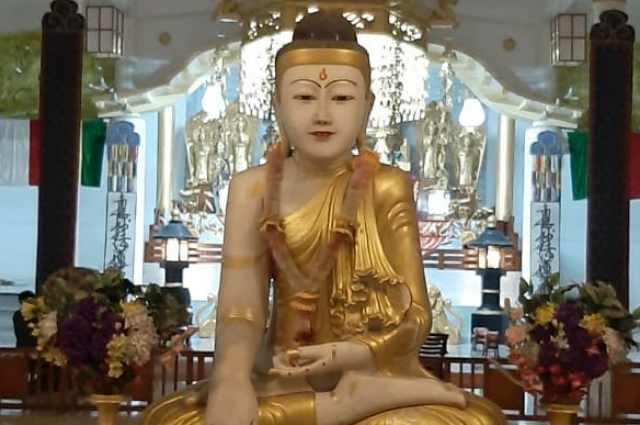
Nipponjan Myohoji (Japanese) Buddhist Temple at Rajgir, Bihar India. Photo credit: Saikat Kumar Basu
The conversion of several European and American business tycoons, academics, celebrities, and sports stars from Judaism and Christianity to Buddhism has no doubt impacted the popular culture in the West. This has also popularized Buddhism in Western democracies. Secondly, the struggle of Tibetan refugees in Western democracies against Chinese oppression in Tibet has further strengthened the bond with Buddhism in Western nations. Thirdly, the visits made by His Holiness Dalai Lama to Western countries, the exploration of the Buddhist faith, social, cultural and religious practices has further popularized Buddhism in Western nations. Fourthly, there has been a great resurgence of Buddhist Studies in the academic circles of Western democracies. This has rejuvenated the connectivity between the old Eastern and the modern Western philosophical thoughts and ideas to explore one another freely without any bias, prejudice or socio-cultural inhibitions. This over time has strengthened the ties between people across different religious backgrounds to better understand and respect one another.
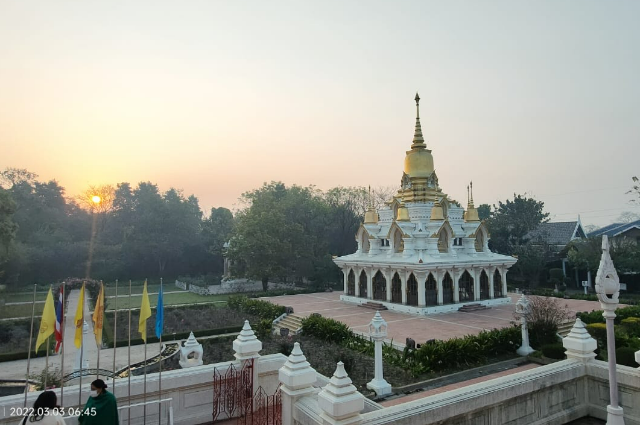
Thai Buddhist temple at Lumbini, Nepal. Photo credit: Saikat Kumar Basu
Furthermore, the simplicity of the Buddhist philosophy, teachings and practices as laid down by Tathagata Buddha has been very successfully translated in English and other European languages. This particular attribute of modern Buddhism studies and research has made Buddhism available in vernacular languages in Western countries. This has revolutionized Buddhism in Western nations and made the religion available as well as easily accessible and affordable for ordinary people. As a consequence, more and more people in these countries have been attached towards Lord Buddha and his teachings. Comparative religious studies has now been incorporated in Western curriculum at primary, secondary and tertiary levels of education. This has made the new generations in Western democracies to be more liberal and accepting towards other religions, Buddhism being on the top of the list of many.

Nipponjan Myohoji Buddhist stupa at the yJapanese Monastery at Lumbini, Nepal. Photo credit: Saikat Kumar Basu
Several high-quality movies and documentaries made on Buddhism have further popularized the religion in the West like Little Buddha, Kundun, Samsara, and Siddhartha to mention only a handful has successfully touched the sensitivity of Western nations. Buddhist art and architecture, statues and models, frescos, motifs, murals, mandalas, thankas have become increasingly popular in Western societies due the bold use of bright colours, simplicity of designs and serious attention to details. Buddhist theme-based handicrafts are also becoming increasingly popular as gift items, presents, and ornamental pieces for interior decoration at a reasonable pricing. Such products are now showing up even on the shelves of high-class malls, curios and antique shops, pawn shops and thrift stores reaching people conveniently and effortlessly at attractive affordable prices, making them extremely popular with the public in Western countries.

Bhutanese Buddhist Monastery: Lumbini, Nepal. Photo credit: Saikat Kumar Basu
The most important and hidden factor
Ultimately, the biggest seller of Buddhism in Western countries, culture, and society is Lord Buddha himself and his monumental teachings that have cultural significance down the ages. Buddhist ideas and principles have been infiltrating into western societies through European sailors, soldiers, travellers, explorers, religious preachers, artists, intellectuals, scholars and historians who visited the Asian countries during ancient and medieval periods. Through these early visitors, Buddhism entered Europe silently. The Gandhara school of art has a significant impact of Eastern and Western civilizations developing around the ancient. Silk Route trade that was transmitted silently back into Europe. Bits and pieces of Buddhism and Buddhist teachings were always present in European societies. However post World War II and Cold War periods, Buddhism and Buddhist teachings and practices have further penetrated into Western nations.
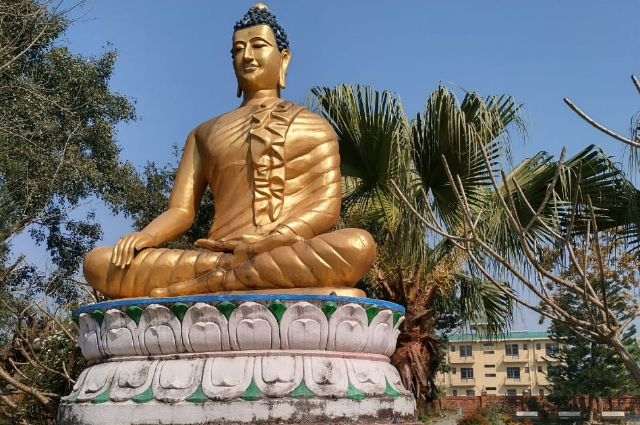
Lord Buddha statue at the Myanmar Monastery: Lumbini, Nepal. Photo credit: Saikat Kumar Basu
The simplistic principles and grand philosophy of Buddhism have also appealed to Western minds suffering from depression, anxiety, stress, anger, frustration and helplessness. Modern Western psychological holistic treatments as well as counselling incorporate a number of essential Buddhist teachings for the treatment of vulnerable patients. Modern Western philosophy knowingly or unknowingly has incorporated many Eastern religions (such as Hinduism, Jainism and Buddhism) based themes and thoughts into their own sociocultural practices. Lord Buddha’s teachings therefore have slowly engulfed the agitated Western mind and shown them the path towards peace, prosperity and tranquility. The money-based success in modern Western life has its own baggage in the form of excessive smoking, sex and drug abuse, family violence, aggressive personality, social dysfunction and mistreatment towards socially vulnerable community members like children, senior citizens, people of colour, and different ethnicities. Buddhism has provided an alternative platform to Western societies to explore life with new hope and faith and through positive engagements. Hence, Buddhism has made a significant impact to life transformation in Western democracies and has been becoming increasingly popular over time.
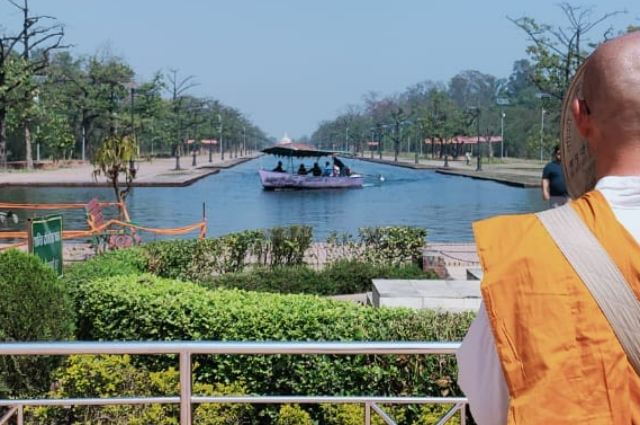
Mayadevi Temple Complex: Lumbini, Nepal. Photo credit: Saikat Kumar Basu
Conclusion
Hence, we can comfortably conclude that Buddhism has arrived in Western democracies to stay. The rising popularity of Buddhism in Western democracies clearly indicates that it has integrated quite well with the social, cultural, and religious lives of Western democracies. The wonders of Buddhism, it’s simple yet powerful practices, meditation power, and healing effects on both body and mind have strengthened the bonding with Western societies. The west has realized that Buddhism is not just a world religion; but a way of life to attain peace, solitude, and happiness through simple, well-determined and tested philosophy that has transformed life for millions of people around the world. The recognition of accepting Buddhism as a religion and socio-cultural practice without burden or restrictions has contributed towards the rapid spread and dissemination of Buddhism in Western democracies. Last but not the least, till date Gautama Buddha has significant impact on human minds around the planet across the traditional borders of ancient India. Buddhism provides the true platform for the amalgamation of Western and Eastern philosophies in a holistic manner.
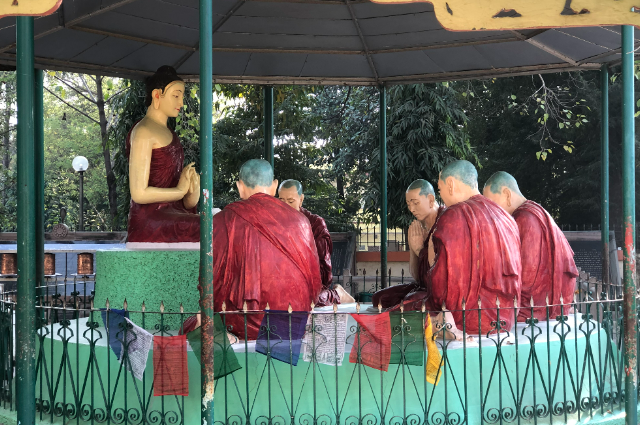
Photo credit: Saikat Kumar Basu
